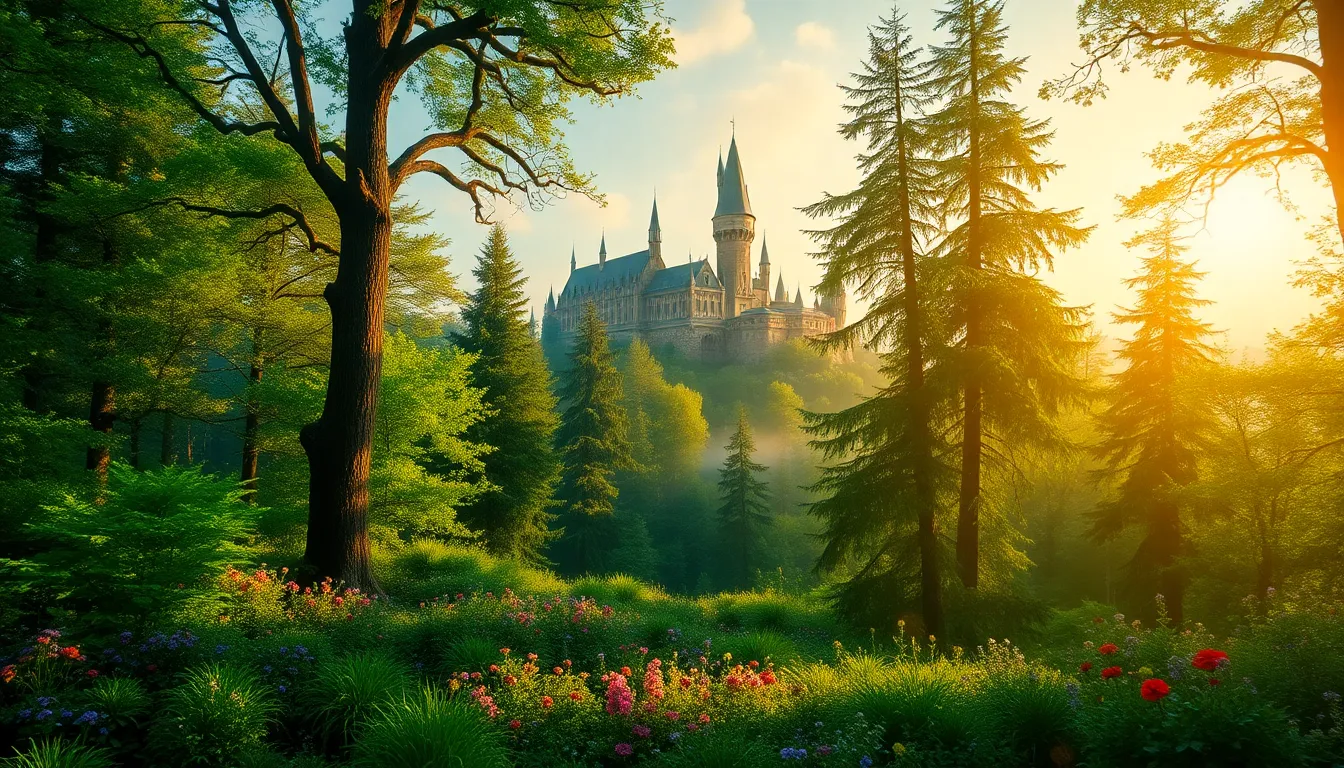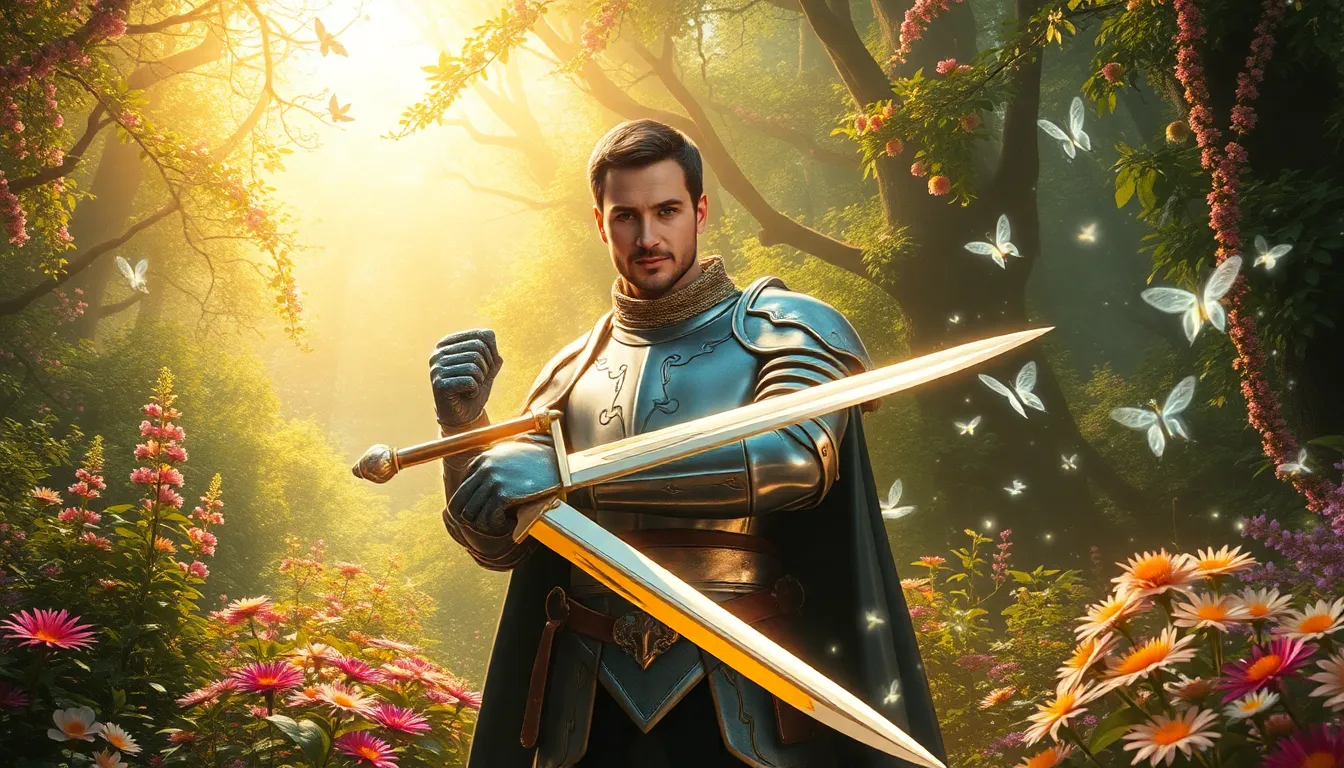Table of Contents
ToggleImagine strolling through a forest where every tree whispers secrets of ancient magic. Fantasy scenario triggers can transport anyone from the mundane to the extraordinary in an instant. These delightful sparks of imagination ignite creativity and whisk people away on thrilling adventures, whether they’re crafting stories or diving into role-playing games.
Overview of Fantasy Scenario Triggers
Fantasy scenario triggers encompass various elements capable of sparking the imagination. These triggers transport individuals from mundane experiences to vibrant worlds filled with adventure. Notably, they can appear in literature, films, art, and even everyday encounters.
Characters and mythical creatures often serve as powerful triggers. A unique character, like a brave knight or a mischievous fairy, can inspire storylines that captivate audiences. Environments that evoke wonder, such as enchanted forests or futuristic cities, draw people into immersive experiences. Magical artifacts frequently play an integral role, offering quests and challenges.
Sound and imagery enhance the effectiveness of these triggers. For instance, a haunting melody or mysterious soundscapes can amplify emotional responses. Colors that elicit specific feelings contribute to creating vivid mental landscapes. Each detail works in tandem to forge connections between ideas and experiences.
Interactions within role-playing games exemplify how fantasy triggers operate in practice. When players assume the roles of their characters, they unlock new perspectives and narratives. Every decision influences the unfolding story, allowing for personalized experiences. Engaging in these scenarios fosters creativity while encouraging collaboration among participants.
Emotional resonance stands as a hallmark of effective fantasy scenario triggers. The most impactful triggers often evoke feelings like wonder, joy, or even fear. Incorporating these elements can lead to rich storytelling experiences that captivate and inspire. Ultimately, mastery of these triggers can enhance creativity across various mediums and connect individuals to their imaginative selves.
Types of Fantasy Scenario Triggers

Fantasy scenario triggers manifest in various forms, each playing a unique role in sparking creativity and imagination.
Emotional Triggers
Emotional triggers resonate deeply with individuals. They often evoke strong feelings like nostalgia, joy, or fear. A character’s journey through loss might mirror personal experiences, enhancing emotional engagement. These connections foster empathy, pulling audiences into their worlds. When a story strikes a chord, it leaves a lasting impression. Joyful melodies or haunting soundscapes can amplify these emotional triggers, making moments more impactful. Audiences find themselves reliving moments through these feelings, which breathe life into narratives.
Visual Triggers
Visual triggers create powerful imagery that captivates the imagination. Colorful landscapes, such as emerald forests or stark deserts, transport individuals into different realms. Iconic visuals, like a wizard’s castle or a dystopian city’s skyline, stimulate curiosity. These visuals often serve as backdrops that influence mood and narrative direction. A bright blue sky might evoke feelings of hope, while dark, rainy scenes could induce tension. Together, these elements combined with cinematography or art style enhance overall experience and storytelling depth.
Narrative Triggers
Narrative triggers propel stories forward, igniting interest in characters and their adventures. Strong beginnings, such as a mysterious letter or an ancient prophecy, capture attention immediately. Each plot twist or revelation serves to maintain engagement throughout a story. Characters may undergo transformative journeys, representing growth or self-discovery, which resonates with audiences. A central conflict often heightens tension, prompting emotional investment in outcomes. Well-developed narratives keep audiences eager for resolution, leading to compelling interactions and discussions.
Importance of Fantasy Scenario Triggers
Fantasy scenario triggers play a crucial role in creativity and imagination. These elements breathe life into stories and experiences, making them memorable and engaging.
Enhancing Creativity
Triggers spark new ideas and original concepts. Incorporating emotional, visual, and narrative elements leads to unique storytelling. For example, emotional triggers evoke nostalgia, helping creators forge connections with audiences. Visual triggers immerse individuals in vibrant settings, inspiring detailed world-building. Narrative triggers, with their compelling plots and character arcs, push creators to explore diverse themes. Engaging with fantasy scenarios not only enhances artistry in various mediums, but it cultivates an environment where innovation thrives.
Fostering Imagination
Imagination flourishes when exposed to fantasy scenario triggers. Invoking mythical characters and enchanting landscapes captivates individuals’ minds. Writers often find inspiration in iconic figures like dragons or wizards, injecting depth into their narratives. Environments, such as magical forests or grand castles, transport audiences into new realms, fueling their creativity. Sound and imagery weave emotional connections that amplify engagement, allowing for immersive experiences. Each interaction with fantasy scenarios stimulates longing for exploration and adventure, nurturing a vibrant creative spirit within all.
How to Utilize Fantasy Scenario Triggers
Utilizing fantasy scenario triggers effectively enhances creativity and storytelling. Implementing specific techniques empowers individuals to engage deeply with their imaginations.
Techniques for Implementation
Start by identifying emotional, visual, and narrative elements in your projects. Use immersive descriptions to shape environments, allowing readers or players to envision each scene vividly. Incorporate sensory details like sounds, scents, and textures that resonate emotionally. Craft character backstories that evoke empathy or excitement; these foster connection to the narrative. Introduce unexpected plot twists that challenge characters and maintain interest, keeping audiences invested. Involve collaborative world-building in role-playing games, enabling players to contribute their own elements, deepening engagement.
Examples in Practice
Consider using fantasy scenario triggers in various mediums such as writing, gaming, or film creation. In literature, authors like J.K. Rowling employ rich descriptions and emotional arcs to immerse readers in magical worlds. Games like Dungeons & Dragons harness narrative triggers by allowing players to shape story outcomes through character choices. Artists often depict enchanted landscapes that stir imagination and curiosity. Directors in films utilize visuals and soundtracks that resonate emotionally, enhancing viewer experiences. These examples illustrate effective applications of fantasy scenario triggers across diverse creative fields.
Fantasy scenario triggers play a crucial role in sparking creativity and imagination. By tapping into emotional, visual, and narrative elements, creators can craft engaging stories that resonate deeply with audiences. These triggers not only enhance the storytelling experience but also foster connections between individuals and their imaginative selves.
Engaging with these elements encourages innovation and exploration across various mediums. As writers and creators incorporate sensory details and unexpected plot twists, they breathe life into their narratives. This vibrant interplay of imagination and artistry ensures that every interaction with fantasy scenarios remains memorable and impactful. Embracing these triggers can transform ordinary moments into extraordinary adventures, enriching both storytelling and creative expression.




